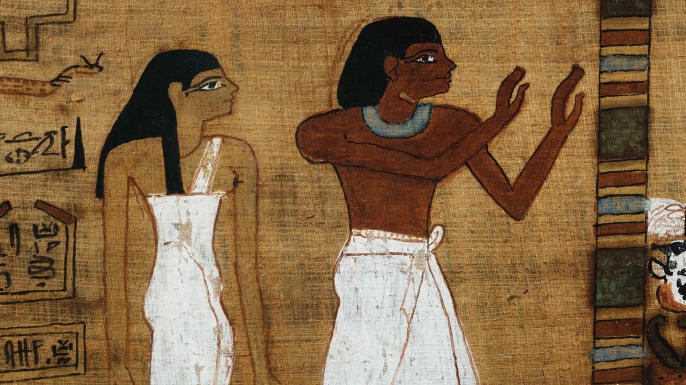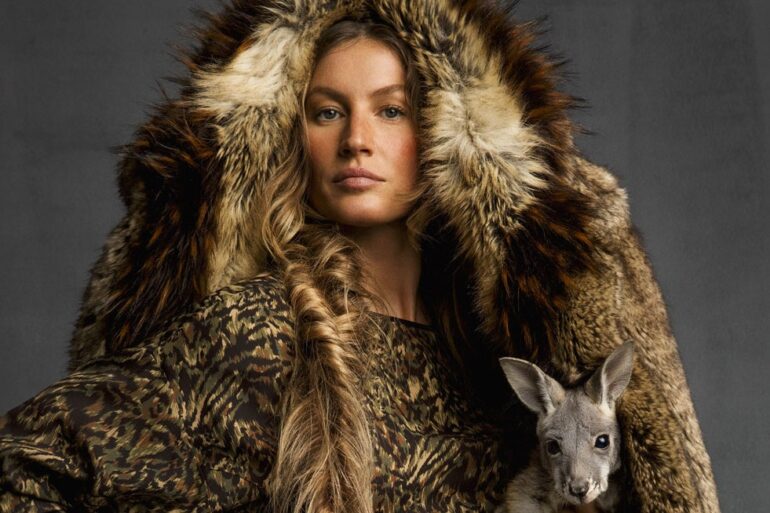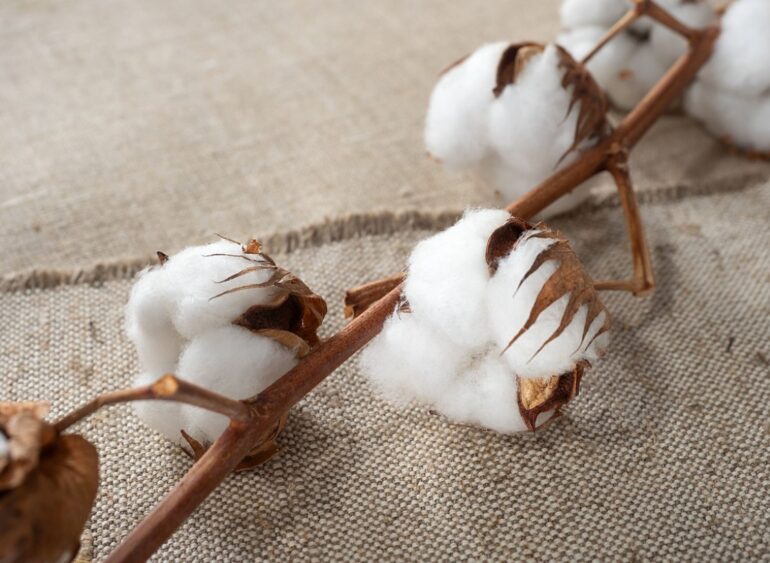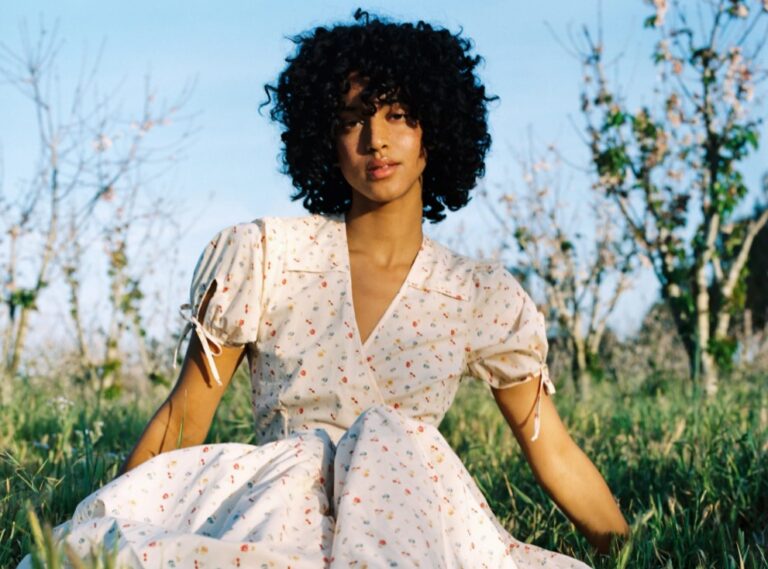Each day, you have the option to put on something that makes a social statement. Of course, you can still dress to look wild, follow someone else’s conservative professional standard, “mix it up” to suit your mood, or try out the latest fashion trend. However, by carefully choosing your clothing with high quality and social responsibility in mind, you can also assure yourself that no harm will come to you from your clothing or to the environment because of what choices you made. Your closet is the golden key to your unique decisions for public self-expression; it is also another opportunity to protect your body and our planet at the same time. Most of us invest heavily in what choices we make in clothing.
Let’s Look at Ancient History to Make Wise Choices Today

You may not realize it, but the type of fabrics that we want to wear, and that is best for our skin and our environment, are the same fabrics that we wore in ancient times.
1. Vintage Linen
Making original clothing in Egypt was a time-consuming task that involved handmade weaving from the flax plant. Organic flax is still used today to make quality, classic clothing to last decades. Linen is a light fabric that is still coveted by style-conscious women for the lovely feminine way that it drapes and sways while on the female form. Additionally, the rough linen texture against a woman’s skin makes her skin appear more youthful and softer by comparison to the heavily textured fabric.
2. Hand-woven Wool
As tastes matured, clothing became to represent the social status of the wearer. Most adults love the wicking and natural warmth (even when wet) of natural organic wool. Un-dyed or naturally dyed wool is becoming increasingly popular. Some designers add additional materials into looms to add a little more pizzazz. Make sure your wool clothing is 100% natural, and that the fabric dyes are organic.
3. Basic Cotton

We have enjoyed wearing cotton since about 100 BCE when the Romans were verified via a ship’s log as importing high-quality cotton from India. Cotton is lightweight, heat-reflecting, and absorbable. Even today, wearing basic organic cotton is easy to recognize, especially with the addition of outstanding designs, embroidery, or attractive dye patterns. Organic cotton feels cool all summer long and keeps you warm during the winter months.
4. Raw, Traditional, or Peace Silk
Although delicate in texture, one of the most durable and easy to dye fabrics is silk. A single thread of tremendous strength and 1,000 to over 3,000 feet in length form a single cocoon. Producing silk, even raw silk, is quite expensive as it takes more than 3,000 silkworm cocoons to produce a single pound of silk. Read the label for “cruelty-free or peace silk” as a means to enjoy the luxury but does not aid in harming the silkworm.
5. Leather
When it comes to durability, leather is known for its great looks and for longevity. An environmentalist may find it hard to feel good about wearing leather. However, the best highest-quality pair of shoes are often made of leather and can last quite a long time. This first-class product looks expensive and often sets the stage for the rest of the outfit. Seek out non-toxic quality manmade choices, as little else says “high social class” like well-made shoes.
6. Fur

From the farm or a field, real fur comes from live animals. Like the tiny silkworm, the smaller the animal, the more costly the final item of clothing will be. Ancient man was able to eat the animal’s flesh and use its teeth, bones, and hoofs as everyday tools. In using the fur, they would tan the hide and wear the gorgeous furs for decades. Today, we still adore the look of fur.
Modern Technology Offers Inexpensive Clothing Options
Choose what your clothing will say to the world!
Here are some modern clothing options that can allow you to express yourself but at the same time, keep costs within your clothing budget. Do not hesitate to mix a trendy t-shirt with a recycled used cashmere sweater. Add a pair of ragged jeans and some high heels or a silky flowing skirt and flat sandals. In our modern world, the sky is the limit when it comes to fashion. The goal is to get noticed!
1. Faux Linen
The look of linen is so deeply ingrained in our psyche that you might be surprised at how much Faux Linen is in your closet. Typically, faux linen is 80% polyester and 20% viscose. However, designers are always seeking the perfect look and feel of the original product – stable, lightweight, absorbent, and beautifully flowing. Consider putting a tie-dye shirt, which can be found at, The Adair Group, over a white linen skirt for a beachy, fun look.
2. Faux Wool
Often a lovely imitation faux wool fabric is a blend of cotton and polyester. Usually, it is not as soft to the touch as real wool, but it is a lot easier and cheaper to clean. Real wool normally requires dry cleaning, which adds to the cost and time to maintain the garment. In general, wool is used for outer garments, like long winter coats.
3. Faux Cotton

The farm has brought us many forms of cotton ranging from basic cotton to the coveted Pima cotton. The labor required to grow cotton is quite intensive, making clothing items a bit pricey. However, if you want to avoid the higher cost of real cotton, or don’t like to iron your clothes, you may want to consider easy-care synthetics.
4. Faux Silk
The lab is the place to look for materials that look or feel like silk at a fraction of the cost. Many beautiful sizes, colors, and styles are at your fingertips. Silk also works well as a great accessory piece, like a scarf. Wider and longer silk scarves allow you many different styling options, giving you a lot of versatility!
5. Faux Shearling (Lamb’s Coat – Leather)
Faux shearling is a fantastic imitation of the buttery soft leather of a young lamb is often made from a blend of vinyl and wool or other synthetic fibers or materials. Typically, this soft suede is worn on the outside of the coat. Many types of faux shearling feel soft and comforting against your skin.
6. Faux Fur
The “farm” that creates faux fur is at the manufacturer’s facility. The synthetic fibers are cut to the right length and then heated to lie in a manner like animal fur. Then experts add dye that looks like an animal’s coat. Finally, the end product is brushed to further add to the natural appearance. This is a great alternative if you’re not comfortable wearing real animal fear.

